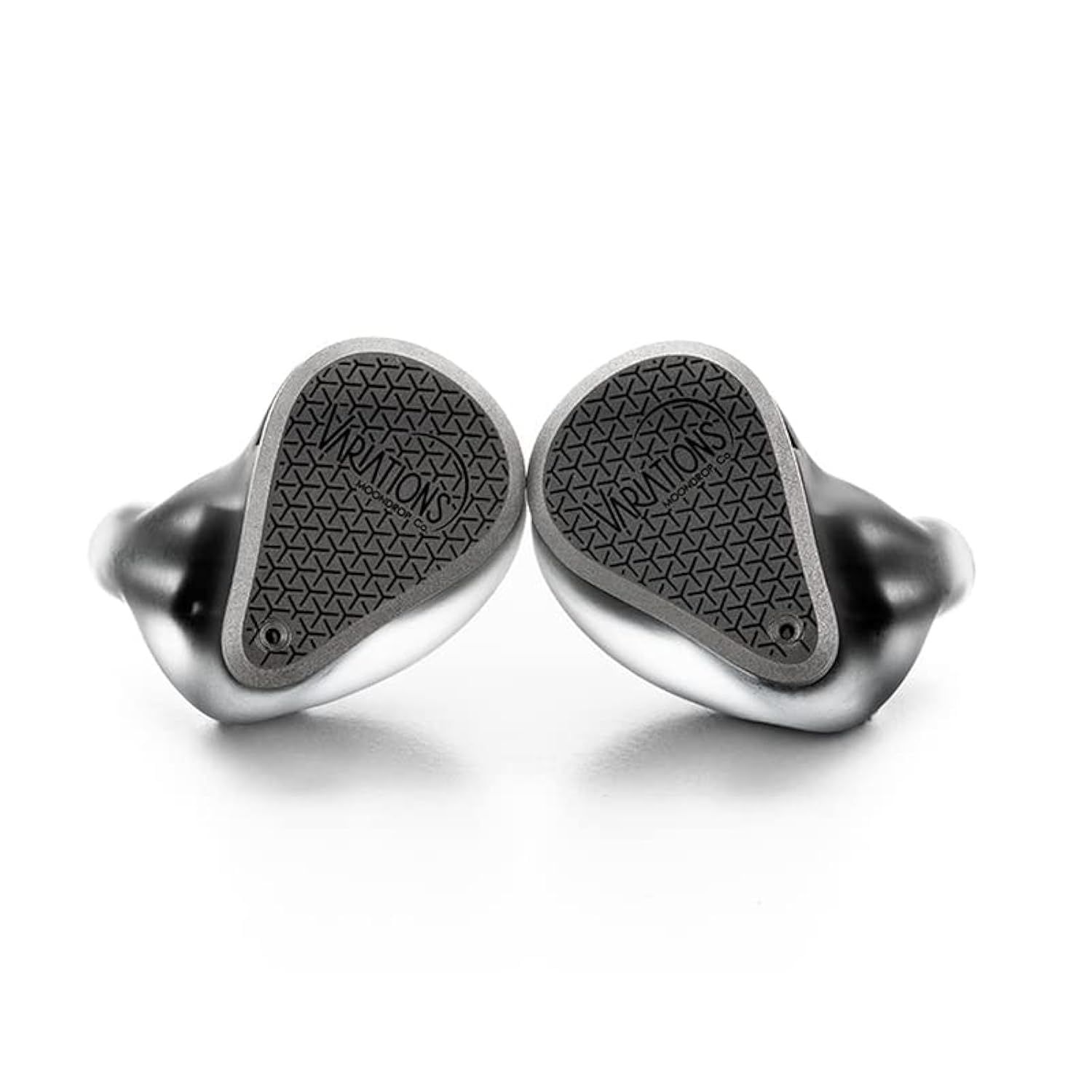PRXvs.Variations
Sound & Specs Comparison
Information
Both IEMs are widely regarded in the audiophile community. See how they differ in terms of sub-bass response, upper mids, clarity, and overall tonality. Spider charts and rating breakdowns included.
Objective Comparison
Facts, details, stuff.
| General Info | PRX | Variations |
|---|---|---|
| Brand | KZ Earphones | Moondrop |
| Country | China | China |
| IEM Description | The KZ PRX is the brand’s first true fourth‑generation planar‑diaphragm IEM, engineered around a 14‑magnet matrix and an ultra‑thin, silver‑galvanized membrane for unparalleled high‑ and ultra‑high‑frequency extension (up to 40 kHz) with minimal distortion. Housed in a rugged alloy shell and paired with a detachable silver‑plated OFC cable and memory‑foam tips, it delivers precision tuning, a wide soundstage, and lasting comfort. Ergonomic curves and eco‑friendly packaging underscore KZ’s commitment to both craftsmanship and sustainability. | Moondrop Variations is a hybrid in-ear monitor combining electrostatic, balanced armature, and dynamic drivers for a precise and immersive listening experience. Known for its balanced, reference-style tuning with tight bass, clean mids, and extended treble, it’s a favorite among audiophiles who crave clarity and technical performance. Ideal for detail lovers and those seeking a high-fidelity sound signature. |
| Price Level | < 100 | 500 – 1.000 |
| Housing & Driver | ||
|---|---|---|
| Driver Config | Planar Magnetic | Tribrid |
| Driver Types | Planar Magnetic Driver | Dynamic Driver + Balanced Armature + Electrostatic |
| Shell Material | – | Copper |
| Cable | – | – |
| Technical | ||
|---|---|---|
| Freq Range | – | 9-40,000 Hz |
| Impedance (Ω) | – | – |
| Sensitivity (dB) | – | – |
| Crossover | – | – |
| Platform Info | ||
|---|---|---|
| Comments | 0 | 1 |
| Visit Count | 82 | 85 |
| External Reviews | 1 | 3 |
Meta Ratings
Sound-wise, PRX provides a notably more refined presentation, with improved detail retrieval, microdynamics, and instrument layering when compared to Variations (10 vs 6.5). For comfort fit, It performs readably better (8 vs 7). From the connector housings to the shell seams, It demonstrates distinctly tighter tolerances and higher production standards. Variations’s cable appears slightly more premium in both aesthetics and function, from its braid quality to termination. It's accessories are slightly better curated, reflecting greater attention to usability, presentation, and value-added content compared to PRX.
| PRX | Variations | |
|---|---|---|
| Sound | 10.0 | 6.5 |
| Comfort Fit | 8.0 | 7.0 |
| Build Quality | 8.0 | 6.5 |
| Stock Cable | 5.0 | 5.5 |
| Accessories | 5.5 | 6.0 |
Sound Characteristics
Variations delivers s deeper and more extended sub-bass, reaching lower frequencies with greater authority than PRX (6.5 vs 6). Listeners may find the low-end impact on It m more engaging during high-dynamic passages (8.5 vs 6). It achieves a better warmth and coherence in the lower mids, bringing more realism to guitars and cellos (7.5 vs 7). In the upper mids, It sounds a clearer and more articulate, highlighting vocals and lead instruments better than PRX (8 vs 7.5). The treble on PRX is n more nuanced and refined, especially when it comes to cymbals and ambient elements (8.5 vs 7.5). The upper treble of It extends a further, offering more sparkle and openness than Variations (8.5 vs 8). Listeners may notice that It presents sounds with a more lateral space, giving recordings more openness than Variations (8 vs 7.5). It extracts low-level details b more effectively, helping subtle nuances emerge clearer than on Variations (8.5 vs 8). Track elements feel a more isolated and clean on It, offering clearer focus than Variations (8 vs 7). It avoids frequency masking n more successfully, preserving clarity across the spectrum better than Variations (8 vs 7). Notes on Variations feel s more grounded and weighty, whereas PRX can sound thin or hollow (8 vs 6.5). It hits with m more authority during transients, creating a more explosive effect than PRX (8.5 vs 7). Listeners may experience s fewer sharp edges in 'S' and 'T' sounds with It, whereas PRX can get fatiguing (9 vs 7.5). The tone quality of It feels a more organic and true-to-source than the slightly artificial flavor of PRX (7.5 vs 6). The overall tonality of It is a more balanced and cohesive, offering a sound signature that feels better tuned than PRX (7 vs 6). The grain and surface of instruments are rendered a more vividly by It, while PRX feels flatter (7.5 vs 7).
| PRX | Variations | |
|---|---|---|
| Sub Bass | 6.0 | 6.5 |
| Bass | 6.5 | 6.5 |
| Bass Feel | 6.0 | 8.5 |
| Lower Mids | 7.0 | 7.5 |
| Upper Mids | 7.5 | 8.0 |
| Lower Treble | 8.5 | 7.5 |
| Upper Treble | 8.5 | 8.0 |
| Sound Stage Width | 8.0 | 7.5 |
| Detail | 8.5 | 8.0 |
| Layering | 8.0 | 7.0 |
| Masking | 8.0 | 7.0 |
| Note Weight | 6.5 | 8.0 |
| Slam | 7.0 | 8.5 |
| Sibilance | 7.5 | 9.0 |
| Timbre Color | 6.0 | 7.5 |
| Tonality | 6.0 | 7.0 |
| Texture | 7.0 | 7.5 |
Tonal Signature
// Nothing to compare yet.

